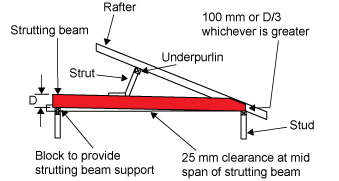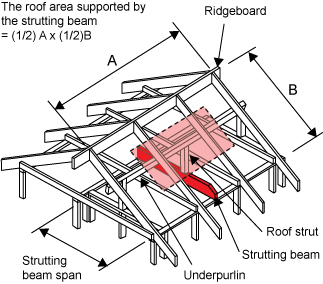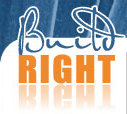Strutting beams continued

The ends of strutting beams may be chamfered A chamfered edge is a shaped or bevelled edge connecting two surfaces. It is used to soften sharp edges and to improve fit. to avoid interference with the roof claddings. Where the end dimension is less than 100 mm or one-third of the beam depth, whichever is greater, an alternative support method must be provided. This support is similar to that shown for hanging beams.
Table 27 of AS 1684 provides details for maximum strutting beam support.

